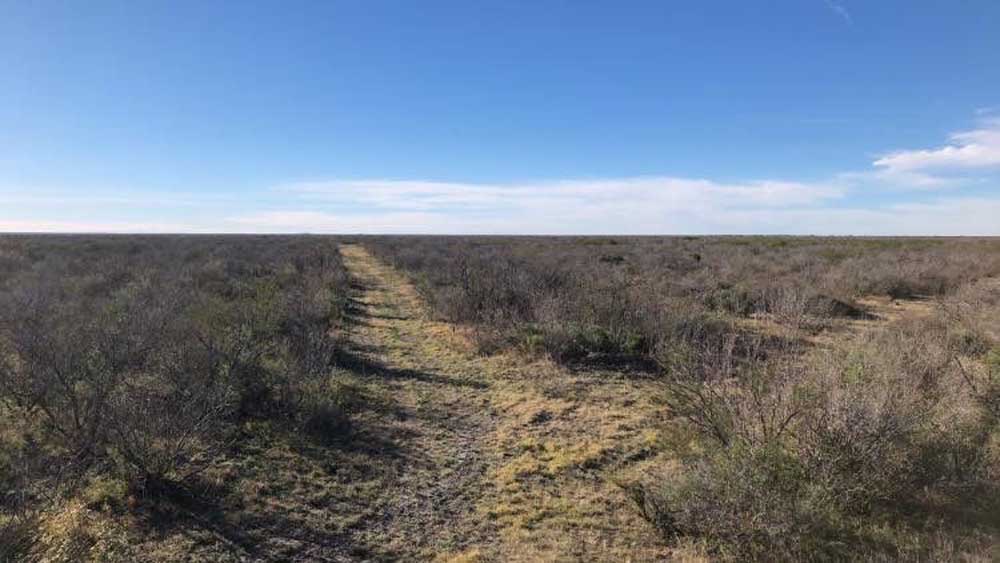Sometimes what is seen is not always what is looked for
Published 11:13 pm Thursday, December 27, 2018

- An endless view from a South Texas blind set up for hunting deer provided a look at a whole lot more. (Steve Knight/Staff)
MAVERICK COUNTY — To my north was a geological outcrop. It was the southern end of the Edwards Plateau. To the south laid the South Texas Brush Country. Where the horizon met the ground to the west was Mexico. A hundred miles east and out of sight was San Antonio.
That was my view from a tower blind.
I was on the Mavala Ranch, a 2,000-acre spread on the Maverick/Zavala county line a friend bought two years ago. It is a work in progress when it comes to deer hunting, and may be that way for several years. Irrigated food plots are being established along with a cottonseed-feeding program for protein in the spring and summer to hopefully develop that South Texas deer potential.
A highway fronts the ranch and it is high-fenced on one side, low-fenced on another and almost no-fenced on a third. Although in a transition zone between the Hill Country and South Texas, the ranch has more of a Brush Country feel.
Several years ago, the late Dallas outdoor writer Ray Sasser wrote a book, “View From A Tower Blind.” It was a series of essays about deer hunting. As I got settled in the blind for an afternoon hunt, the book immediately came to mind. As the worries of the world immediately melted away, I realized it was not because of what I was seeing on the ground in the form of deer, but what I was looking at around me. The only signs of civilization was one workover rig working on a well on another ranch in one direction, a large tank battery on another ranch in another direction and the sound of the vehicles on the highway headed toward Eagle Pass or probably San Antonio. Other than that, it was just miles and miles of Texas, to borrow a line from the late, great Bob Wills.
And it was relaxing.
The morning temperatures had dipped into the 20s, unusually cold for that part of the state. Sitting in a ground blind at sunrise, I saw a number of young bucks and does that came to the corn dropped from a road feeder.
The afternoon temperature was much milder, not short sleeve warm, but comfortable enough to sit up on the tower and take in the part of the world. The blind was not an enclosed box, but a super-sized tripod hybrid. It had two seats and a top, but it had the feel of sitting outdoors. A special feeling that took me back to my first years of deer hunting where you either sat on a rock overlooking a draw or a garage-built open-air box using a bucket for a seat. Those old blinds were built of angle iron and had some quarter-inch plywood as walls. They were anchored to the ground by a rock on each leg or maybe a thin wire run from the floor again to a rock on the ground. When thinking of those blinds I always think of the Windy Ridge location. It was always a roll of the dice whether it would be standing or not when you got to the ranch, and you sure did not want to hunt it on a windy day.
From the South Texas tripod, I glassed the surrounding brush and the distant views some, but for the most part I was happy to just sit and take in the sights.
A caracara or Mexican eagle, one of my favorite birds, flew by. Gliding just above the brush top it was looking for an evening meal. Looking down on the bird as it flew by was a unique perspective.
Then I laughed at a field mouse that worked its way from brush to brush. My thought was had the caracara flown by just a few minutes later, the field mouse would not be having as much fun.
I had my head on a swivel looking for deer, but was not seeing a thing. Then my phone went off. Another hunter was texting that he had a doe walk out into the sendero in front of his blind. I picked up my binoculars and watched the scene unfold a quarter-mile or more away. I watched as his rifle barrel poked out the side. Then I saw smoke coming out of his barrel. What seemed like a second later, I heard the report of the rifle. It was a fascinating science experiment.
It was less than an hour before sunset when I saw the first deer, but they were too far away and moving quickly.
It was not long after I saw a dark spot that looked out of place down a sendero to the west. The sun was becoming a problem, but with binoculars I could see it was a doe. It trotted toward me a short ways and then turned into the brush. When I looked back that way again, I saw another dark spot. This time it was a buck, nose down trailing the doe. Like on a rope he followed the exact trail of the doe, disappearing before I could make heads or tails of it.
Before the UTV showed up to pick me up, a few more bucks appeared — all young deer. It did not matter. I had had a view from a tower blind.






